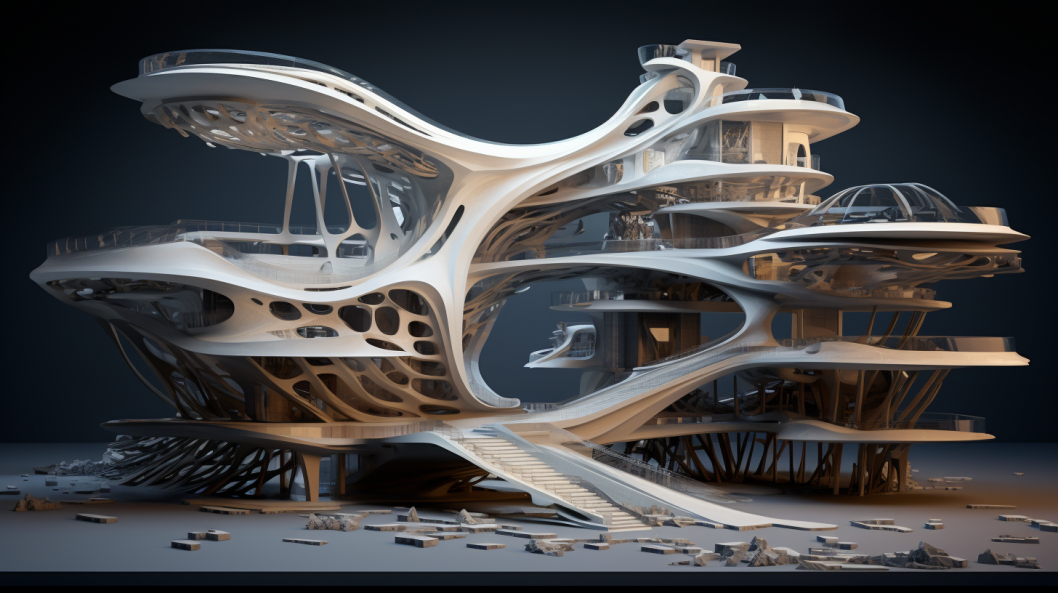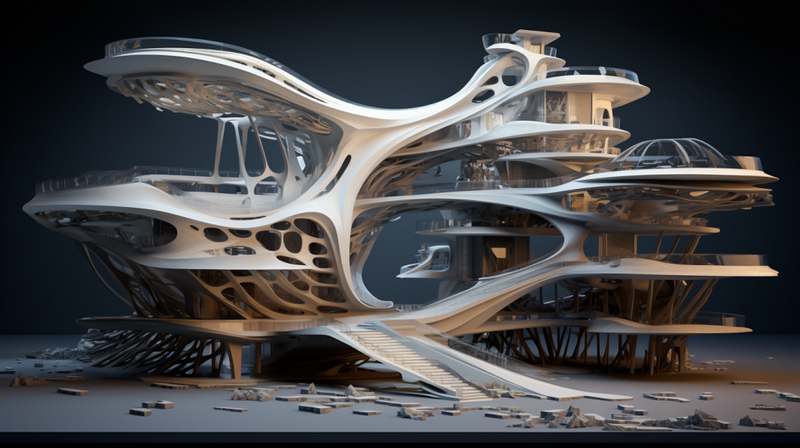Fluid Buildings: Adding Movement and Flow to Static Architecture
In architecture and city planning, solid, unmoving shapes have long defined our urban landscapes, giving us a feeling of lasting permanence and stability. Yet, within this fixedness, there's a growing desire to explore and incorporate movement—to weave the ups and downs of life's dynamism into the unchanging. This opens the door to a new idea where fluid dynamics brings life to static architectural forms, telling stories of modern cities that are always in motion.
Moving Beyond the Solid Form
Integrating fluid dynamics into architecture isn't just about making things look good or simulating movement; it's about embedding practical uses and responsive environments into our city structures. This concept pushes us into a future where buildings are not just static objects but living organisms that respond, adapt, and evolve. This creates a natural dance between shape and purpose, stability and motion.
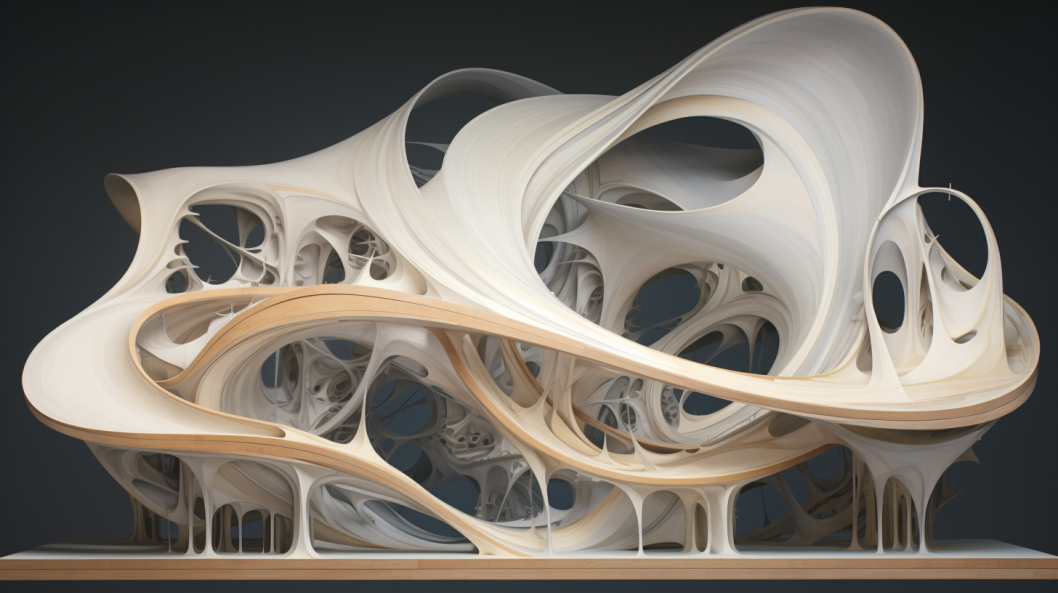
The Essence of Fluid Dynamics in Architecture
In physical science, fluid dynamics studies how liquids and gases move, looking at the forces and energies they embody and interact with. In architecture, we can imagine our built environments metaphorically as "fluids," with every structure, pathway, and open space shaping the "currents" of human and environmental flow.
- How does a crowd move through a plaza?
- How does wind weave through skyscrapers?
- How does light filter through a lattice framework?
These questions treat buildings and spaces as entities that shape and guide dynamic forces, similar to how fluids navigate through various contexts.
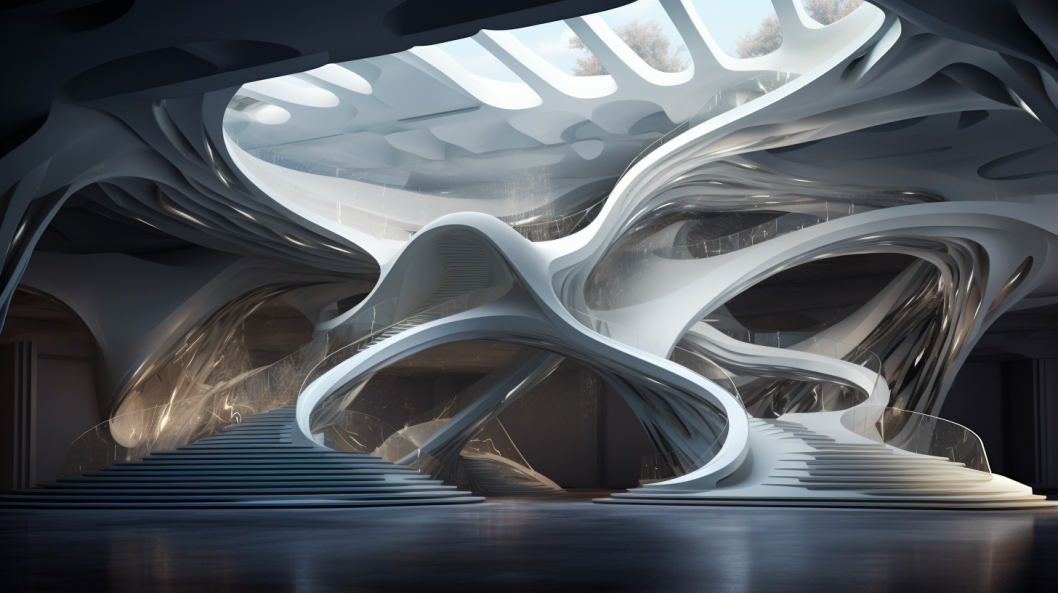
Transformative Potentials in Design
By blending the static with the kinetic (moving), architects and designers use a multi-disciplinary approach. They take ideas from physics, engineering, and aesthetics, creating buildings that are not just physical objects but dynamic structures interacting with their inhabitants and environment in a constant, engaging conversation.
Responsive Environments: Applying fluid dynamics to architecture could create spaces that change and react to varying environmental and human factors. For instance, outer walls that change their configuration in response to sunlight, or modular internal spaces that can be reconfigured based on how they are being used.
Efficiency and Sustainability: By considering fluid principles, buildings can be designed to handle natural forces like wind and water more efficiently. This could potentially reduce energy use and minimize their environmental footprint.
Evolving Aesthetics: Incorporating movement into architecture naturally fosters a dynamic visual experience. How a structure is perceived could change based on the viewer’s position, lighting conditions, and time, offering a rich, ever-changing aesthetic experience.
Case Studies: Turning Ideas into Reality
To give a real example of this concept, the use of dynamic flow in architecture can be seen in projects like the Al Bahr Towers in Abu Dhabi. These towers feature an outer wall made of adjustable geometric patterns that control light and heat entry, offering sustainable benefits and a moving visual appeal.
Another excellent example is Toyo Ito’s Sendai Mediatheque in Japan. Here, the structural columns wind through space like floating seaweed, not just providing support but also directing the flow of space and human movement. This embodies a simultaneous static and dynamic presence.
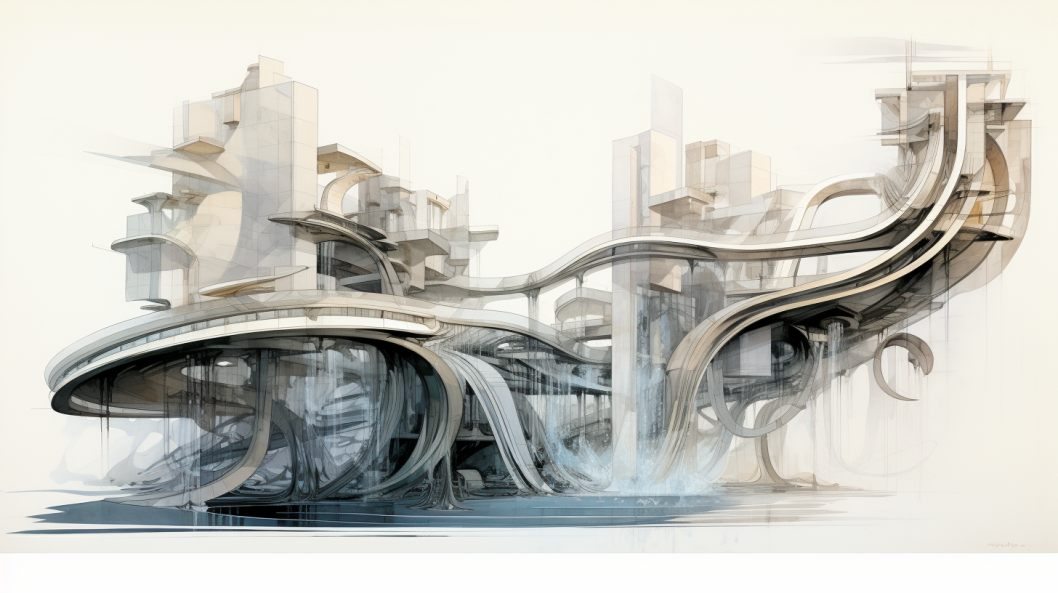
Engaging with the Future: Opportunities and Challenges
As architectural forms weave into the fabric of fluid dynamics, they embark on a journey that opens many avenues for exploration. This approach promises innovative design strategies, more sustainable practices, and improved user experiences.
However, actually achieving this combination brings challenges, mainly in bridging the gap between theoretical principles and practical applications. It requires an interdisciplinary approach, combining insights from architects, engineers, environmental scientists, and even sociologists to understand the many implications of incorporating flow into form.
Furthermore, integrating evolving technologies, such as smart materials and digital interfaces, becomes crucial. This unlocks the potential to create architectures that are truly in sync with the dynamics of natural and social environments.
